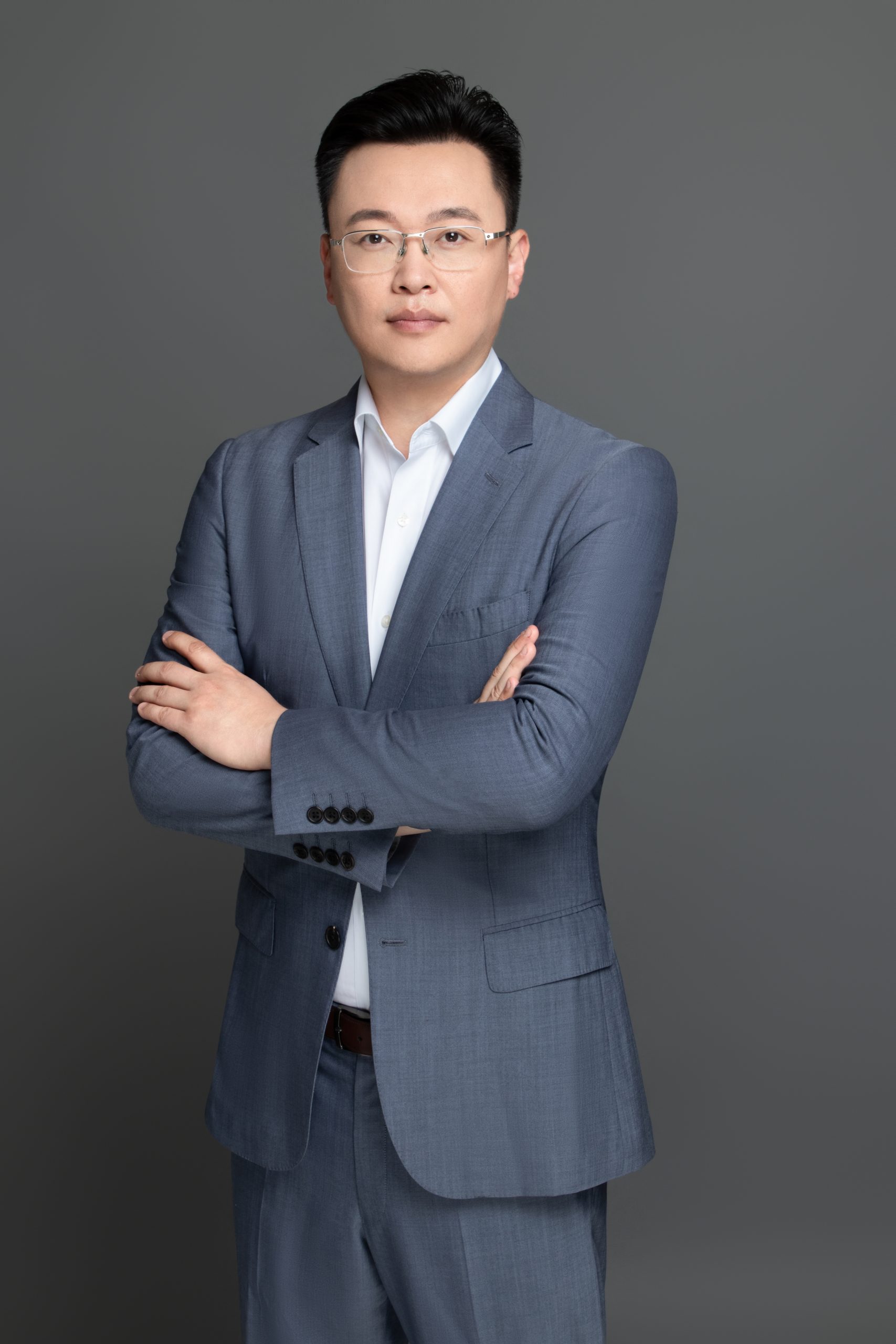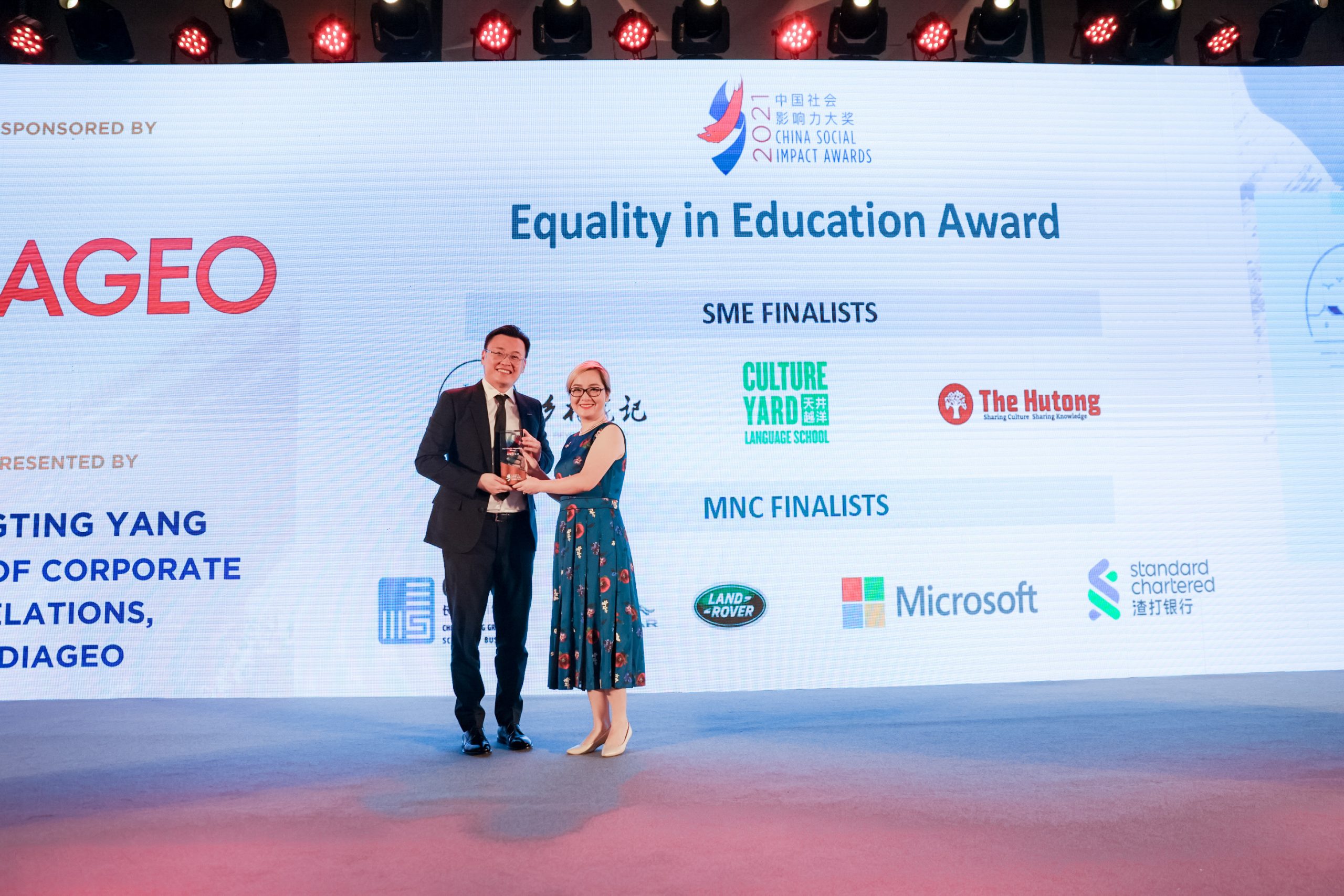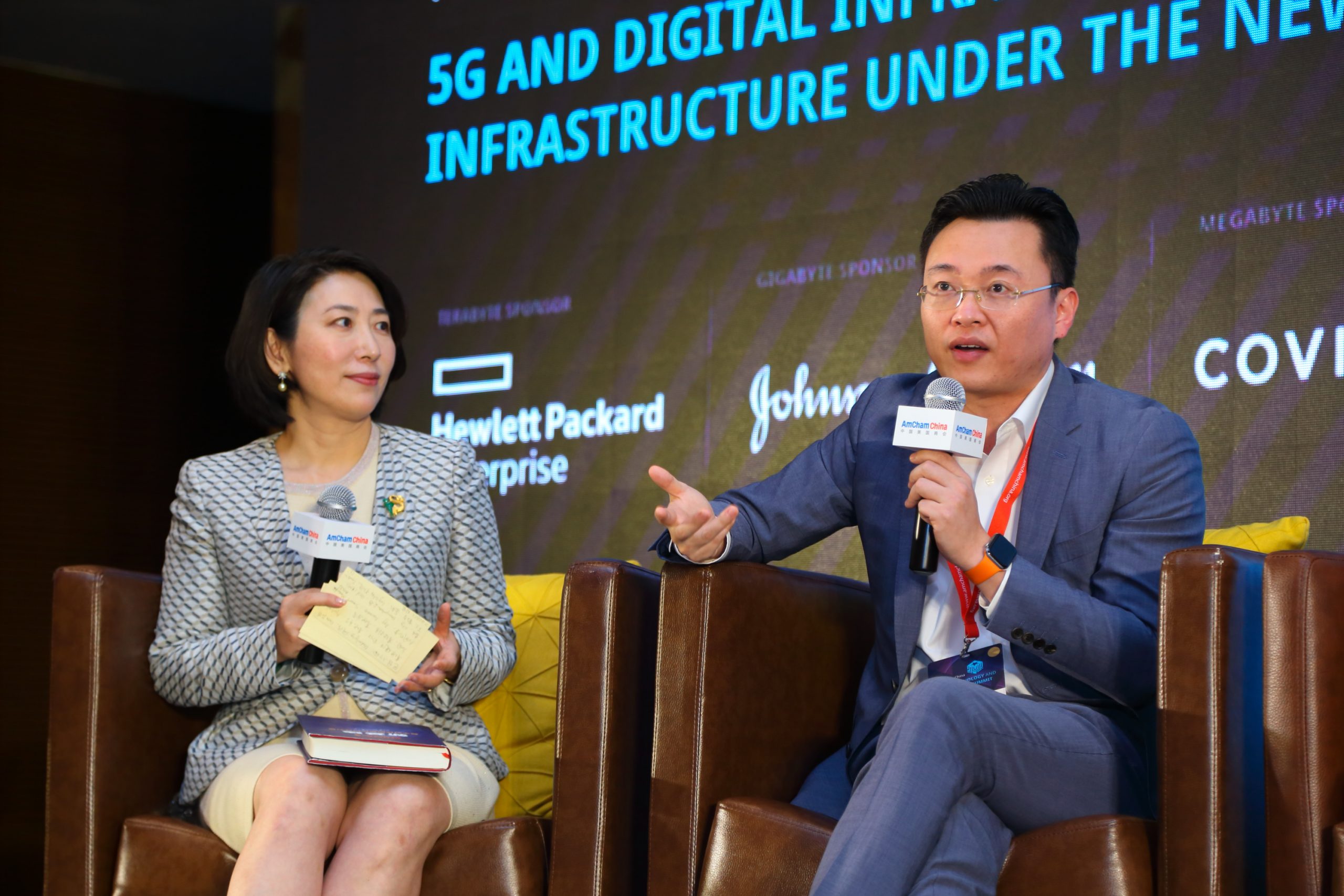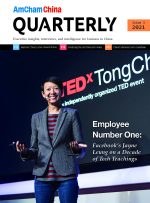How Strong Digital Foundations Pave the Way to Success
By Joe Bao
In an exclusive piece for the AmCham China Quarterly, Joe Bao, President of Microsoft China, shares his insights on the connection between sustainability and productivity, the impact of the shift to hybrid work, and how data has become the new currency of digital transformation.

Joe Bao serves as President of Microsoft China. In this capacity, he leads Microsoft’s high performing enterprise sales, technical support, and global partner and consulting organizations, helping to enable the digital transformation of Microsoft’s vast network of customers and partners.
Joe is a 17-year veteran leader at Microsoft, bringing a rich blend of experience in operational areas of sales, marketing, and strategy at both Microsoft Corporate HQ and the Greater China Region. Prior to this role, he was the Chief Strategy Officer & VP of Global Partner Solutions for Greater China, responsible for developing long-term strategy, as well as leading a robust organization to support commercial customers, partners, developers, and digital communities in their innovation and transformation.
He has been recognized for his professional performance and achievements within Microsoft, winning the Circle of Excellence Platinum Award – the highest level of honor that Microsoft employees worldwide can receive. He also cares deeply about public welfare, serving on the boards for non-profit organizations specializing in rural education.
Photo courtesy of Microsoft China
Improving operational efficiency and service delivery is at the heart of digital transformation and, in many ways, this is what Microsoft today is all about. But what our customers are really asking us for is digital acceleration. If the global pandemic has taught us anything, it’s that the capacity to turn challenge into opportunity is built on a strong digital foundation. We’ve seen over and over again how organizations which had already begun their digital transformation journeys felt better equipped to respond to rapid and unpredictable change. They were prepared with the tools and platforms to shift to remote work, recalibrate supply chains for changing demands and unplanned interruptions, and transact with customers in new ways. Now, many of these organizations are thriving, and adapting faster than ever.
Peking University’s Guanghua School of Management was already using Microsoft Teams, so at the beginning of 2020, they were able to quickly pivot from offline to online for their opening ceremony. More than 8,000 students from all over the country and around the world started online classes in the spring semester through Teams Live Events. Early investments like these to build a strong digital foundation makes a big difference, and the changing landscape has made it clear that “business as usual” will not be part of the new norm.
At the same time, the priorities of our customers have shifted over the past year. We have all become more conscious of our place as part of a global community. We’re more aware of how our actions contribute to that community, and most organizations – 76% of them, in fact – now realize they have a responsibility to play a constructive role in society.
Sustainability Fostering Operational Efficiency
Many of us have re-committed to putting together a future that allows everyone to not just survive, but thrive, by harnessing the power of technology. Sustainability is a big part of that because the world is facing unprecedented simultaneous challenges of mitigating and adapting to changing climates, ensuring resilient water supplies, feeding a human population rapidly growing to 10 billion people, and stemming a catastrophic and ongoing loss of biodiversity and ecosystems.
We know that human society must achieve net-zero carbon emissions by 2050. But we need to begin operating in a manner that respects the limits of finite resources and fully takes advantage of renewable ones, while working to fix the damage that has already been done. This requires a new age of technology informed by sustainability.
Like many organizations, sustainability at Microsoft evolved from an operational-only focus, where we looked at making our offices and datacenters more efficient and sustainable, to work that spans the company, including products and services, customers and partners, policy, and, of course, our employees. We set our first carbon emissions reduction goal in 2009 and have accomplished some incredible things over the past decade in the sustainability space: from our carbon neutral program (100% carbon neutral + carbon tax in 2012, and goal of carbon negative by 2030), our renewable energy progress (70% by 2020, 100% by 2025), our commitment to building sustainable products and infrastructure (LEED Gold certified new datacenters, zero waste by 2030, building the Planetary Computer), and by relying on our principles of transparency and accountability in how we communicate our progress and outcomes.
We have also worked with customers to co-develop tools and solutions from AI for Earth as well as deploying APIs created through the program. For example, the US Department of Agriculture is testing some of our advanced agricultural AI work to boost crop yields and provide guidance on planting and sowing for farmers in the US, while international agriculture organization ICRISAT is doing the same in India.
Whether customers utilize our sustainability solutions or not, sustainability benefits are baked into both the software and hardware services from Microsoft. Envision Group is a great example. Their EnOSTM intelligent IoT operating system uses Azure IoT, machine learning and other services, because the Microsoft cloud not only provides comprehensive technical capabilities that can be deployed to all parts of the world quickly and compliantly, it also helps them accelerate toward zero-carbon, which helps them win more business. Their system is being used in urban energy management applications in Singapore, Thailand, France, and elsewhere.

Joe Bao, on behalf of Microsoft China, accepting the award for Equality in Education at the 2021 China Social Impact Awards.
Photo courtesy of Microsoft China
AI to Empower Growth
There is no longer any question that AI can make a monumental difference within an organization, from solving big problems to completely evolving a business model. One example came through the partnership between Novo Nordisk’s expertise and experience in diabetes care and Microsoft’s Azure cloud platform and AI services. The two companies collaborated to deliver an AI chatbot with a smart, natural-language interface to help more Chinese diabetic patients improve their knowledge of the disease for better self-management. Both Novo Nordisk and Microsoft have made a commitment to a “healthcare + AI” model and are setting a new benchmark in AI-powered chronic disease management, driving critical advancements in healthcare.
But not every business has to start with such big ambitions. Putting AI into action isn’t easy. It requires balancing a future vision with more immediate opportunities to improve and compete. It entails creating a culture that’s data driven, curious, and committed to the responsible use of AI, then recognizing the technical capabilities you need to make implementation a reality. Most importantly, it means empowering everyone with AI – not just your technical teams.
Microsoft created the AI Business School two years ago to provide guidance on strategy, culture, responsibility, and other critical topics for key decision makers across industries. We partnered with experts and analysts and interviewed leaders across different industries to understand how to be successful and lead in the age of AI.
Data’s Central Role in Digital Transformation
Data is the new currency of digital transformation. Whether providing new insights, improving decision making, or driving better business outcomes, enthusiasm for unlocking the power of data has never been greater. But as MNCs grapple with operating in many different countries with different regulatory regimes, while at the same time trying to maximize the benefit of a unified and consistent cloud architecture, it can get very complex – to the point that it scares some companies back into silos, which totally defeats the purpose.
Microsoft has long provided solutions for MNCs to manage compliance and still get all the performance benefits of our Azure cloud. Azure has more than 90 compliance certifications and more than 35 compliance offerings specific to the needs of key industries. Emerging compliance needs are covered, too, because Microsoft engages globally with governments, regulators, standards bodies, and NGOs. Azure has built-in compliance controls, configuration management tools, implementation and guidance resources, and third-party audit reports designed to speed up processes and save money.
But beyond the jurisdictional and compliance challenges we address with Azure, we also recognize that for organizations to have a data culture that empowers digital acceleration and innovation, data has to be open and available, democratized for your talent to work with it. We address this with Azure Data Bricks, which enables organizations to secure and monitor each layer from the application down to storage. We also recently launched Azure Purview to help with unified data governance that helps organizations manage and govern on-premises, multi-cloud, and discovery, sensitive data classification, and end-to-end data lineage that enables data consumers to find valuable, trustworthy data.
Today’s Mixed Reality is Here
Mixed reality is the blending of the physical and digital worlds in ways that used to be the stuff of science fiction but are now present and practical. From construction sites to factory floors, from operating rooms to classrooms, mixed reality powered by AI, the intelligent edge and intelligent cloud are changing how we work, learn, communicate, and get things done. Microsoft is working to lead the way to empower businesses with mixed reality in three significant ways: our HoloLens mixed reality device, mixed reality applications in Microsoft 365, and mixed reality services in the Microsoft Azure cloud.
The maturity of this technology is undeniable and incredibly exciting, taking user experiences to the next level with a combination of truly stunning holographic representations of people, high fidelity holographic 3D models, and the real world around them, which yields real productivity and safety gains.
China National Petroleum Corporation’s IT service and technical support unit, CNPC Richfit, is using HoloLens and Azure Kinect Development Kit to create an immersive training experience that integrates the physical and digital worlds. Employees use HoloLens to learn production equipment engineering, process, operation, and maintenance procedures and tasks using holographic images superimposed on the real world which provides more efficiency while being safer and more effective.

Joe Bao, on behalf of Microsoft China, accepting the award for Equality in Education at the 2021 China Social Impact Awards.
Photo courtesy of Microsoft China
Hybrid Work Transforms Expectations
The past year has fundamentally transformed employee and customer expectations – and there’s no going back. The shift to hybrid work is an opportunity to reconsider everything we’ve done before and question if it’s the way to do it in the future, from the employee work experience to digital selling and hosted events.
The success of any hybrid model starts with people and whether they can thrive, and whether the company culture can flourish. So, everything from onboarding to upskilling on the job, fostering innovation, and employee wellness needs to be on the table. At Microsoft, we’re finding the additional upside is that it helps us attract and retain diverse talent by giving people flexibility in how, when, and where they work.
Managers are very important in this, and we encourage managers to have discussions with their employees on what scenarios enable them to work the way they work best. For example, although we are giving employees the flexibility to work remotely up to 50% of the time, managers and employees can work together to develop individual norms for work schedules and set best practices for collaboration.
Interestingly, since China was first to experience COVID-19 and all of the various stages of reaction, rebuilding, and recovery, Microsoft China served as a prototype for hybrid work for Microsoft worldwide, and we did a lot of research around this. For example, as we are now largely in the recovery stage, we know in China that more than two-thirds of our employees prefer to maintain some sort of hybrid arrangement and 72% of them say they are at least as productive – if not more productive – in hybrid mode. Some things still work better at the office. They say the office is better for hosting visitors, social interaction, large meetings, learning from others, and when they need specialized equipment or a strong, stable network connection. Working from home is better for creative thinking and people appreciate being able to manage their home life better, but two-thirds found they worked longer hours from home and one-third found it more difficult to work with others and connect casually when they are remote.
So, we are working with managers to help them set clear goals and expectations for their teams through coaching and extending empathy, while helping them try different approaches and model healthy behaviors of hybrid working.
Making meetings inclusive and engaging for everyone is more complex in a hybrid model, with some participants together in a physical location, and others calling in remotely. To address this, we’ve created Microsoft Teams Rooms with high-quality hardware that ensures everyone can be seen and heard. They have multiple video screens to create dynamic views of participants, chat windows, whiteboards, content, and notes. Enhancements to in-room technologies help remote participants track and participate in the flow of the meeting.
And finally, there is the opportunity of hybrid process. Every process across the organization – from operations to engineering, sales, supply chain, and finance – needs to be reimagined to accommodate the shift to a digital workflow, and cloud-based infrastructure is critical for supporting that shift. Moving to the cloud is essential. The faster you get there, the faster you can empower your people for hybrid work and deliver great experiences that allow employees to be productive from anywhere, without compromising security. Employees can even use Power Apps to automate key business processes or build custom apps without leaving the Teams platform.
Microsoft China has been leading this evolution for Microsoft in many ways, providing this flexibility, accelerating learning and training, and experimenting with employee engagement as well as automating processes and creating new ways for people to collaborate inclusively. It’s been essential for our team’s success, but also for our customers. When Microsoft employees share lessons learned with the customers with whom they interact, it helps those customers navigate their own transitions to a hybrid work environment – and that is ultimately where we want to be: empowering customers.

This article is from the AmCham China Quarterly Magazine (Issue 3, 2021). To access the entire publication for free, sign up on our member portal here.
